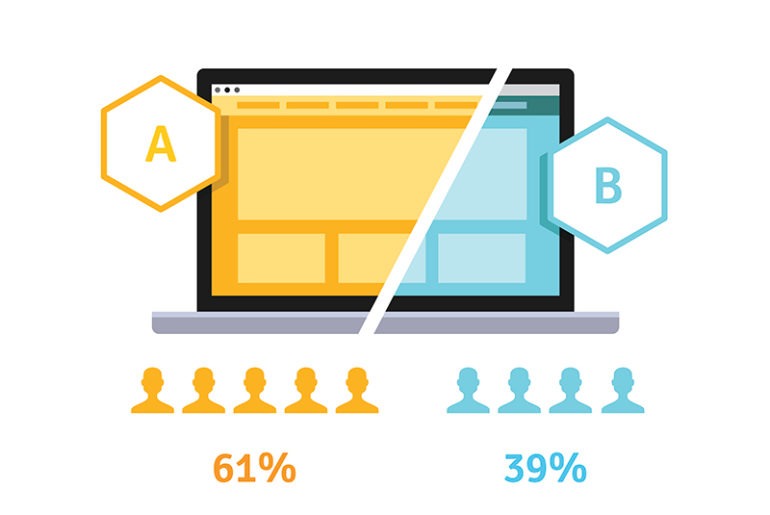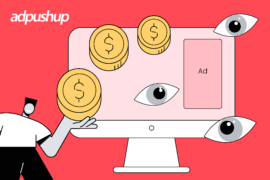Ad optimization is on every publisher’s to-do-list. So here’s the newest 2019 checklist with ways to help you publishers get up and running.
Ad optimization may not be a let’s-try-something-new thought for publishers, but it sure is around the corner most of the times. Even after reading probably two hundred (or thousand) pieces of content on it, the quest for more insights never ends. Why?
Because let’s admit, ad optimization is not something hard or fast. Likewise, nor is it a handbook of tips-n-tricks which will promise to make you rich in 30 days or so (duh!). Ad optimization is carried out meticulously with great research; mostly with greater willingness to do it
Whether a publisher, advertiser, or marketer, we all know what ad optimization means 一 finding, experimenting, and extracting the best out of resources and options present in the ad world to make more money
So now that a new year is fast approaching, I’m guessing your Q1 planning is on the roll. The ultimate goal is to achieve a spike in the revenue. Having said that, if ‘ad optimization’ is on your to-do-checklist for the coming quarter, this post will probably help you orchestrate your efforts.
So getting straight to the point, let’s discuss yet some more methods to perform ad optimization techniques which you can include in your Q1 strategy with the embark of 2019.
Getting Started With Sure-Shot Methods
While ad optimization is a rather ongoing process than just done-and-forgotten, there are some proven methods which can make your efforts yield considerably. Here goes this checklist:
- Header Bidding:
Most publishers engage in the ‘publisher waterfall’ technique first offering impressions to the highest paying network, then the next, and then next. To help escape this bit-by-bit process, comes in header bidding. It lets you, the publisher to offer your inventory to numerous advertisers at the same time and in real-time.
BENEFITS: Time saving. Less leakages. Impressions sold to highest bidders. - Direct Sales:
Just like in real estate when a property purchase feels more lucrative when there’s no commission or brokerage fee levied, direct selling works the same way. Here, advertisers are willing to buy directly from you (the publisher). For the reason that you have a decent sized website and your inventory is highly sought-after, direct selling can be rewarding.
BENEFITS: 100% net take home. No need to loop in ad networks, the middlemen. - Audience Extension:
Also called the ‘lookalike modeling,’ the audience extension method helps you generate revenue from your site traffic without even selling the ad inventory. By placing the cookie scripts in your website footer, you can first track your unique visitors and then their journey on the whole web. When you share the data with advertisers, they leverage it for broader targeting of an interest-based audience, and you, the publisher can manage some extra revenue from it.
BENEFITS: Revenue from raw site traffic. No need to necessarily sell the ad inventory.
Above The Fold Vs Below The Fold (ATF Vs BTF):
A/B Testing = Ad Optimization
First of all, ad optimization enthusiasts (publishers, I’m looking at you) should know 一 there’s no yielding without testing. Like I said above, “ad optimization is nothing hard or fast,” you’ve got to try, test, tailor.
This test means deciding the best address for your ad inventory. Common notions in you head might say “why not just go for above the fold. My ad will be the first thing a user sees.”
While metrics like scroll depth which quantify a user’s degree of engagement might vote for below the fold. The more a user scrolls down to explore, the more engaged he gets.
Because there are other factors which may affect your ad optimization efforts (ad size, placement, proximity to content), I suggest you keep calm and keep testing.
Left Hand Side Vs Right Hand Side (LHS Vs RHS)
Just like the above or below battle, you need to test whether your ad unit serves best on left side or right. What you can do is:
- make two variations of the same page
- let variation #1 have the ad on the left
- let variation #2 with the ad on the right
- ensure you keep all the rest 99% elements same to get justified results
- go live and run your test for a decent time. The same syntax can be used while experimenting ATF vs BTF too.
Page Vs No Page (Include Pages Vs Exclude Pages)
Well here you might just have to gulp the fact that some of your pages might not be really relevant. How? Assume you’re targeting advertisers from the sports niche. You’d want their audience to reach on your page so you could leverage the ad impressions.
Certainly if your web pages/content are relevant, like sports apparel or most trending games of 2018, you’ve made your way. While in case of something as contrasting as 10 things lazy people can do at home, consider trashing the page.
But A/B testing does not end just here. You’d try different ad optimization tests, but ensure you’re aware about A/B testing mistakes which may just kill your hard work.
Ad optimization is much like growth hacking.
Almost all website owners who understand growth hacking may know that it’s driven by rapid experimentation. The intent is to find the most effective ways of growth. Similarly, optimization means making the best or most effective use of a situation or resource to empower growth.
Consequently in both the cases, the goal is to identify the most effective processes to grow revenue.
Redo Your Ad Appearance
Seems like this is something controlled by the advertisers; making their display ads presentable, hence clickable. However in case of text ads served via Google AdSense or native ads, it’s you, the publisher who has the control.
You can make your ads blend in the content atmosphere and make it appear less intrusive for users. Consequently, a better web page look which is more user-friendly always rewards your ad optimization techniques.
Chuck Some Advertisers Out
Yes, you heard me! For Google’s sake, it totally makes sense to break up with advertisers who you think might not best compliment your website and your inventory.
Just how Google search engines put the most quality content web pages on the top, AdSense publishers get a chance to increase their CPC over time by proving relevance and quality.
Don’t Forget Mobile Friendliness
Probably this is a universal factor applicable on all things ad tech; especially ad optimization. Having a mobile optimized website is one of ‘the best’ upgrades you can achieve for your website.
Mobile friendly website also amounts to leveraging mobile monetization as an essential. Since we know how mobile browsing is flourishing, still not having a properly mobile optimized site in 2019 is just leniency.
Does the optimization (or growth hacking) end here? Clearly not. Ad optimization can have endless possibilities owing to the vastness of ad tech.
Furthermore, here are some extra points I’ll cover for you quickly which you can exercise: ad and page load time, data-driven decision making, keeping up with publisher trends, static or dynamic website, contextual targeting, video ads, and more.
Quantifying Ad Optimization Efforts
I’m hoping by now your Q1 plan is populated with a decent number of points in your checklist. But you don’t just execute, do you? You ought to measure the success of the efforts referring to the right metrics (not just CPM or fill rate).
Sources state the most common metrics for publishers are unique visitors (88%), page views per visitor (75%), and page views (71%). But there’s scope for more. Here goes this checklist:
- Revenue Per Audience Segment: Since targeting (audience) comes foremost, understanding the loyalty of segments is inevitable. For example, segment Alpha may be getting you the maximum traffic and decent revenue. But segment Beta may be a more high-intent quality audience which is relatively low on traffic but ripe with revenue.
- Revenue Per Page: After audience, it might actually be interesting to find which page/content is your bestseller. For example, your page on ‘life changing tips and hacks for gadget lovers in 2019’ may be managing more monthly traffic, conversions, and revenue than ‘best gadgets to buy in 2019.’ At this point you’ll know which kind of content to publish which has visitor loyalty and where to do ad optimization first.
- Engagement Check: Probably the most obvious (yet effective) metric, but you do need insights to understand how visitors are acting on your website. Metrics like time spent or session duration, watch time in case of video ads, and events like scroll depth help you decipher the situation. However based on the situation and use case, there’ a bucket of metrics which publishers can analyze and plan their action.
Efforts Or Errors? What Publishers Should Know
Because we’re approaching towards the end, I thought some healthy ad optimization advice won’t harm. So before wrapping things up, let’s have a quick go-through of things you, as a publisher, should remember. Here goes the final checklist:
- Don’t bombard your website with ad units at every corner or every now and then disturbing your content and visitors’ experience.
- A/B testing takes time. So be patient, and give the tests the time they need to gather enough data and prove results.
- Discrepancies are common to an acceptable extent. But when analyzing metrics, be wary of unusually high data discrepancies and consider them alarming.
Above all, make sure this quarter your ad optimization strategies and efforts don’t go empty.
FAQs
The goal of ad optimization is to create ads that are relevant to the users who see your ads, and then to improve these ads based on data collected through A/B tests and user testing.
Advertising optimization can significantly improve the buying process for advertisers who know their best-performing audiences. With programmatic, reaching the most valuable demographics is easy.
Optimization tool solves linear programming (LP), mixed integer linear programming (MILP), and quadratic programming (QP) optimization problems using matrices, manuals, and files. R is used in this tool.

Shubham is a digital marketer with rich experience working in the advertisement technology industry. He has vast experience in the programmatic industry, driving business strategy and scaling functions including but not limited to growth and marketing, Operations, process optimization, and Sales.







